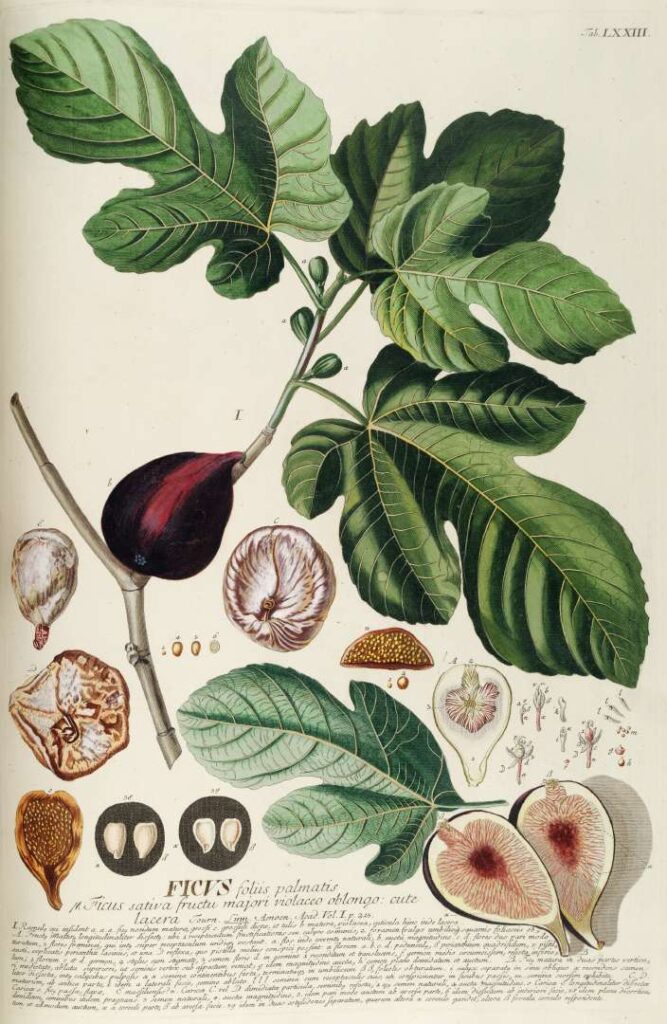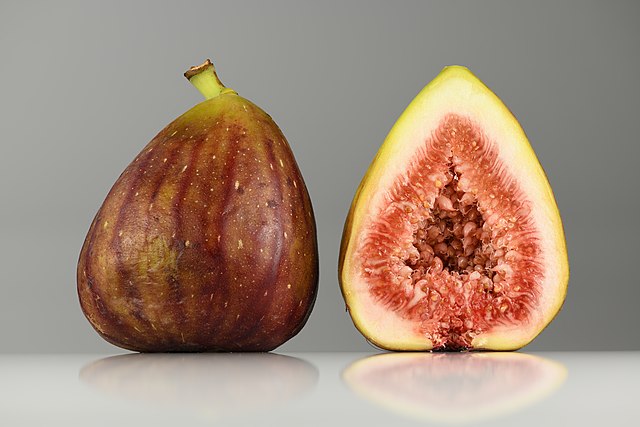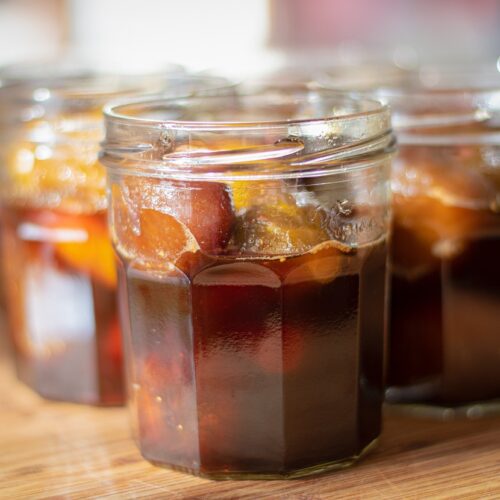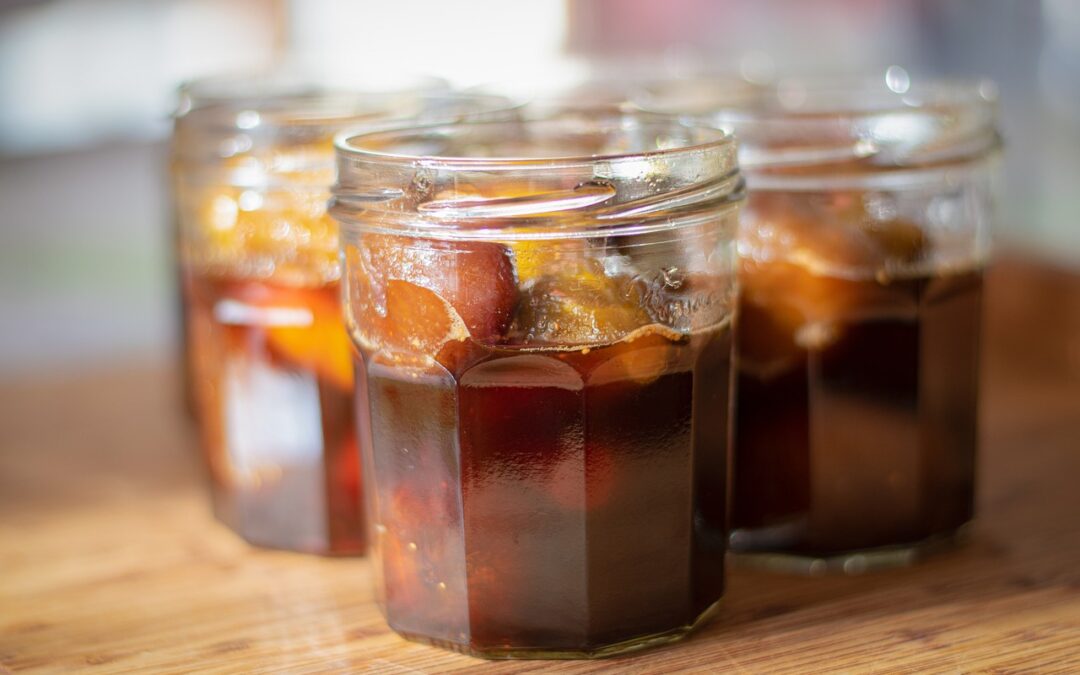Preserved Figs
Figs, those little jewel-toned fruits, are nature’s candy. With a soft, jammy interior and a thin, edible skin, they come in a range of colors (green, purple, brown) and boast a touch of honeyed sweetness with a hint of earthy complexity. Packed with fiber and antioxidants, these beauties can be enjoyed fresh, dried, preserved, or even incorporated into jams and savory dishes.
Figs are a unique fruit with an interesting botanical story. Here’s a breakdown of their botanical characteristics:
Jump to Recipe Print RecipeTechnically Not a Fruit:
- Figs are classified as syconia, a type of fleshy inflorescence (flowering structure) rather than a true fruit.
- The tiny flowers are borne on the inside of a hollow receptacle that eventually becomes the fleshy “fruit” we eat.

Tree or Shrub?:
- Fig trees (Ficus carica) are native to the Middle East and western Asia.
- They can grow as single-trunked trees reaching up to 30 feet tall, or as multi-stemmed shrubs.
- They have rough, lobed leaves that are often hairy underneath.
Flower Power:
- The tiny, individual flowers are hidden inside the hollow receptacle.
- These flowers lack petals and rely on a specific type of wasp (fig wasp) for pollination.
- The wasp enters the receptacle to lay eggs, inadvertently transferring pollen between different fig flowers.
Fruit Formation:
- After pollination, the receptacle swells and becomes the fleshy “fruit” we know as a fig.
- Inside, the tiny flowers develop into small, seed-like structures called achenes.

Varieties and Ripeness:
- Figs come in a wide range of colors (green, yellow, brown, purple, black) and sizes, depending on the variety.
- They are typically harvested when ripe and soft, although some green varieties are enjoyed unripe.
- A milky latex can be present in the stem and skin of unripe figs, which can irritate the skin for some people.
Interesting Tidbit:
- The tiny wasps get trapped inside the fig as it ripens. The wasp larvae feed on some of the fig flowers, but the remaining flowers develop into the achenes we find inside the fruit.
So, the next time you enjoy a fig, remember you’re indulging in a unique botanical marvel with a fascinating pollination story!

Preserved Figs
Equipment
- 1 Mixing Bowl
- 1 4.5 Ltr Pan
Ingredients
- 1 kg green figs about the size of a large walnut
- 10 g bicarbonate of soda
- 1 kg sugar the amount is variable please see point six below
- 1 lemon
Instructions
- Wash and lightly scrub the figs. Trim off any remaining stalk and cut a cross at their base like you would a Brussel sprout.
- Mix the bicarbonate of soda with enough water to cover the figs in a large pan or bowl, add the figs and leave to soak overnight.
- The next day, drain the figs, rinse them in cold water and weigh them. Make a note of their weight.
- Place the figs in fresh, boiling water and simmer until just soft.
- Drain the figs and dry them well on a tea towel.
- Now make a sugar syrup using the same weight of water and sugar as the weight of figs you have – if you have 500g of figs, mix 500ml of water with 500g sugar and boil the syrup (without the figs) until it starts to thicken.
- Add the figs and boil until the syrup is thick – this may take some time.
- Now add 1 tablespoon of lemon juice per 250g figs and bring the mixture to the boil again before letting cool.
- Bottle the figs in sterilised jars and cover with the syrup. If you find you haven’t enough syrup make more (50/50 water and sugar) and top up the bottles before sealing.


Leave a Reply